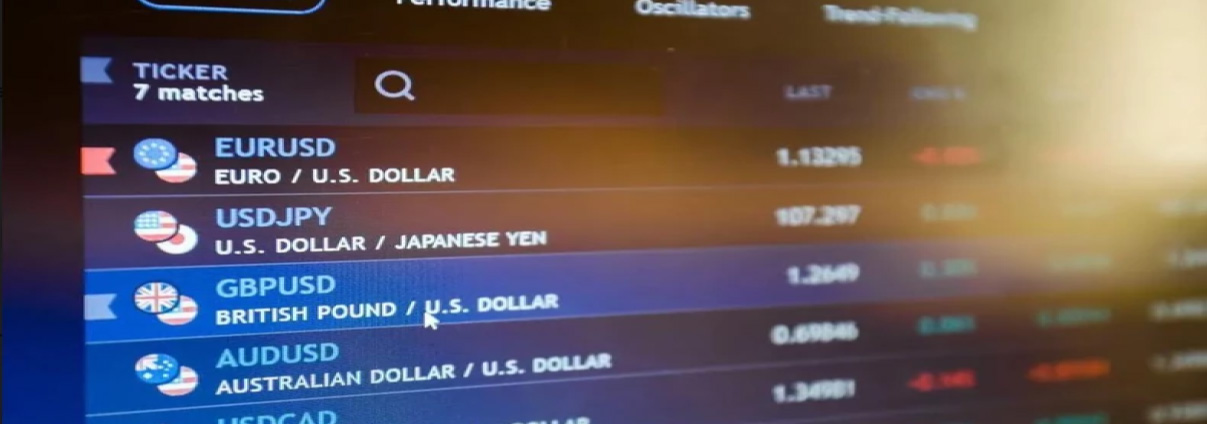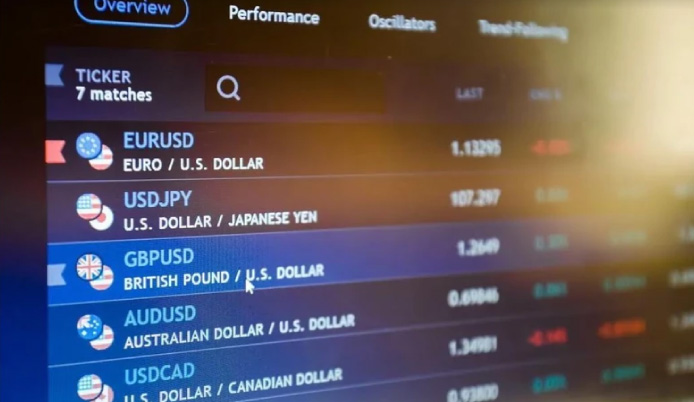All over the world, there are many official currencies that are used. However, on currency trading platforms, only a handful of currencies are actively traded.
One currency is exchanged for another at a pre-determined price in online currency trading. For Profitable Currency Trading, it is the most economically and politically stable and liquid currencies that are demanded in sufficient quantities. For instance, due to the size and strength of the economy of the United States, the American dollar is the world’s most actively traded currency.
All the primary currency trading pairs contain the USD. In Online Forex Trading, all trading, whether buying or selling, takes place through currency pairs, and the most common currency pairs often involve the US dollar or the Euro. In some instances, though, you will find currencies of countries such as Australia and New Zealand could feature.
A currency pair is the national currency of two countries coupled for the purpose of trading on the foreign exchange market. It is a quotation of the relative value of one currency in terms of another currency. Both currencies will have exchange rates on which the trade will have its position basis. Nearly all countries’ currencies can trade, but some currencies pair more frequently than others. The primary currency categories in Online Currency Trading are Majors, Minors (also called Crosses), and Exotics.
The 7 Major Pairs Are:
- Euro Vs. US Dollar
- British Pound Vs. US Dollar
- US Dollar Vs. Swiss Franc
- US Dollar Vs. Japenese Yen
- US Dollar Vs. Canadian Dollar
- Australian Dollar Vs. US Dollar
- New Zealand Dollar Vs. US Dollar
In Currency Trading, the Majors are the most liquid and frequently traded, and account for almost 80% of all FX trades. These pairs usually have the narrowest bid (Buy) and ask (Sell) spreads due to the high volumes of buyers and sellers. The Spread is the difference between the Bid and the Ask prices. The term “PIP”, Percentage in Point, refers to a measuring unit used to describe the smallest price change that may be seen in any exchange rate.
This is often the fourth digit of the currency pair following the decimal point. When there’s a change in the EUR/USD rate from 1.0530 to 1.0531, that is a one-pip shift. The amount of profit or loss a trader experiences per transaction is determined by the pip value. Exchange rates shift based on which currency of a pair is stronger at any point in time. The currency market moves very quickly, and these prices are provided by international banks, and updated in fractions of a second. Our blog post Market Volatility and How to Handle it in Forex gives more insight into this as well.
The currency pairs that are less liquid, and do not trade against the USD are referred to as Cross-Currency Pairs; Some examples of these include the Canadian dollar and the Japanese Yen (CAD/JPY), the Euro and the Swiss Franc (EUR/CHF), and the pound sterling and the Australian dollar (GBP/AUD). Lastly, there are some unusual pairs, which are the least liquid and hence the least traded pairs on the forex market. Due to their low trade volumes, their Spreads can be very wide, and their prices can fluctuate substantially, as opposed to that of the Majors, which have tighter Spreads, lowering one’s trading expenses and increasing your profit potential.
There are two categories in a currency pair; the first currency quoted in the pair is called the base currency. This is the currency a trader believes will change value in relation to the second quoted currency in the pair. The second currency is referred to as the quotation currency or counter currency. So, in the currency pair, EUR/USD, the EURO is the base currency while the USD is the quote currency. If a trader believes that the Euro will appreciate against the dollar, at the purchase rate of 1.3560/1.3562, a trader will need to invest 1.3562 in the quote currency, which is the USD, to purchase 1 unit of the base currency. On the other hand, if you were to sell 1 EURO, in anticipation of the Euro declining in value to the USD, you will receive 1.3560 USD. In Currency Trading, buying a currency pair is referred to as Going Long, while selling the pair, is referred to as Going Short.
1- The Euro/Dollar Pair (EUR/USD): Given that this combination stems from two of the world’s most powerful economies, it comes as no surprise that this is the most popular currency pair traded. This pair is also called “the Euro”. This currency pair is known for its high liquidity and incredibly high volumes of trade, making it prime for Day Traders. The pair is affected by economic releases both by the US Federal Reserve and the European Central Bank (the ECB). A strong dollar leads to a decline in the value of the pair, and vice versa.
2. The Dollar/Japanese Yen (USD/JPY): Traders often refer to this pair as “the Gopher”. With the Japanese Yen being a major currency across Asia, the USD/JPY pair is one of the world’s most traded pairs. Japan is one of the biggest net exporters in the world, and this is why many commodity traders and investors regularly need to convert their local currencies into the Yen. The Yen is also a popular currency for “Carry Trade” strategies, which is similar to the “buy low, sell high plan”. Due to a consistently low-interest rate on this pair, traders can profit from the interest rate differential with USD, amidst a stable exchange rate.
3. The British Pound Sterling/US Dollar (GBP/USD): Trading this pair is usually referred to as trading “the Cable”. Back in the 1800s, the exchange rates between these two currencies were transmitted via a large cable that ran along the floor of the Atlantic Ocean. Also a pair seen as highly volatile, with frequent variations in price, pip movements, and exchange rates, technical analysis is a must if you plan to trade this pair. During the negotiations for Brexit for instance, the performance of this pair was one that experts around the world kept a very close eye on.
4. The US Dollar/Swiss Franc (USD/CHF): Popularly known as “the Swissie”, this pair is also highly impacted by the interest rate differential between the US Federal Reserve and the Swiss National Bank. The Swiss Franc is usually considered a safe haven currency, meaning that in times of extreme volatility, and uncertain market conditions globally, the CHF appreciates against the dollar. Consequently, in times of global turmoil, and political or economic uncertainties, the USD/CHF becomes an increasingly popular choice among traders.s.
5. The Australian Dollar/US Dollar (AUD/USD): “The Aussie”, as this pair is called, is a popular commodity pair. To a large extent, the Australian economy thrives on commodities trading, being a huge exporter of coal and iron ore. As a result, the price of the AUD is largely affected by commodity prices.
6. The US Dollar/ Canadian Dollar (USD/CAD): Another popular commodity pair is “the Loonie”. Also an economy dependent on commodity prices, Canada has huge reserves of timber, natural gas, and oil. Given its physical proximity to the United States, this serves as an advantage as it shares huge trade volumes. As a typical example, when former US President Trump imposed trade tariffs on Canada, and Canada in turn imposed retaliatory tariffs, the Canadian Dollar became vulnerable to market volatility.
7. The New Zealand Dollar/US Dollar (NZD/USD): Named after the popular fruit indigenous to New Zealand, “the Kiwi” is hugely impacted by the tourism industry and the dairy market. New Zealand is the largest exporter of milk products, meaning that if milk prices rise, the NZD tends to appreciate. The economy also thrives on its tourist numbers./p>
In Conclusion, it’s one thing to understand how Currency Trading works, and it takes time to fully grasp how currency pairs work. One may ask which the best forex pair to trade is.
Our answer is that while trading the major 7 currency pairs, you’re bound to be faced with large trading volumes; so, if you’re using the right Currency Trading Platform, such as offered by Geldex, you’ll get tighter spreads, which means you can enter and exit a position at any given moment. The added versatility these currencies have also means you can trade them at any time, night, or day; so, trading on your own schedule is very viable. The pair you choose to trade in could be based on your analysis of where you stand to see the most opportunities for profit, and we advise you to put adequate risk management measures in place while you’re at it.
For those yet to venture into Currency Trading, no two pairs are the same, but with these 7 pairs, you can at least count on stability, as there’s little chance you’ll be met with sudden huge fluctuations.
Trade Safe and Invest with Confidence.
Brought to You by Geldex Invest on behalf of Growell Capital.












